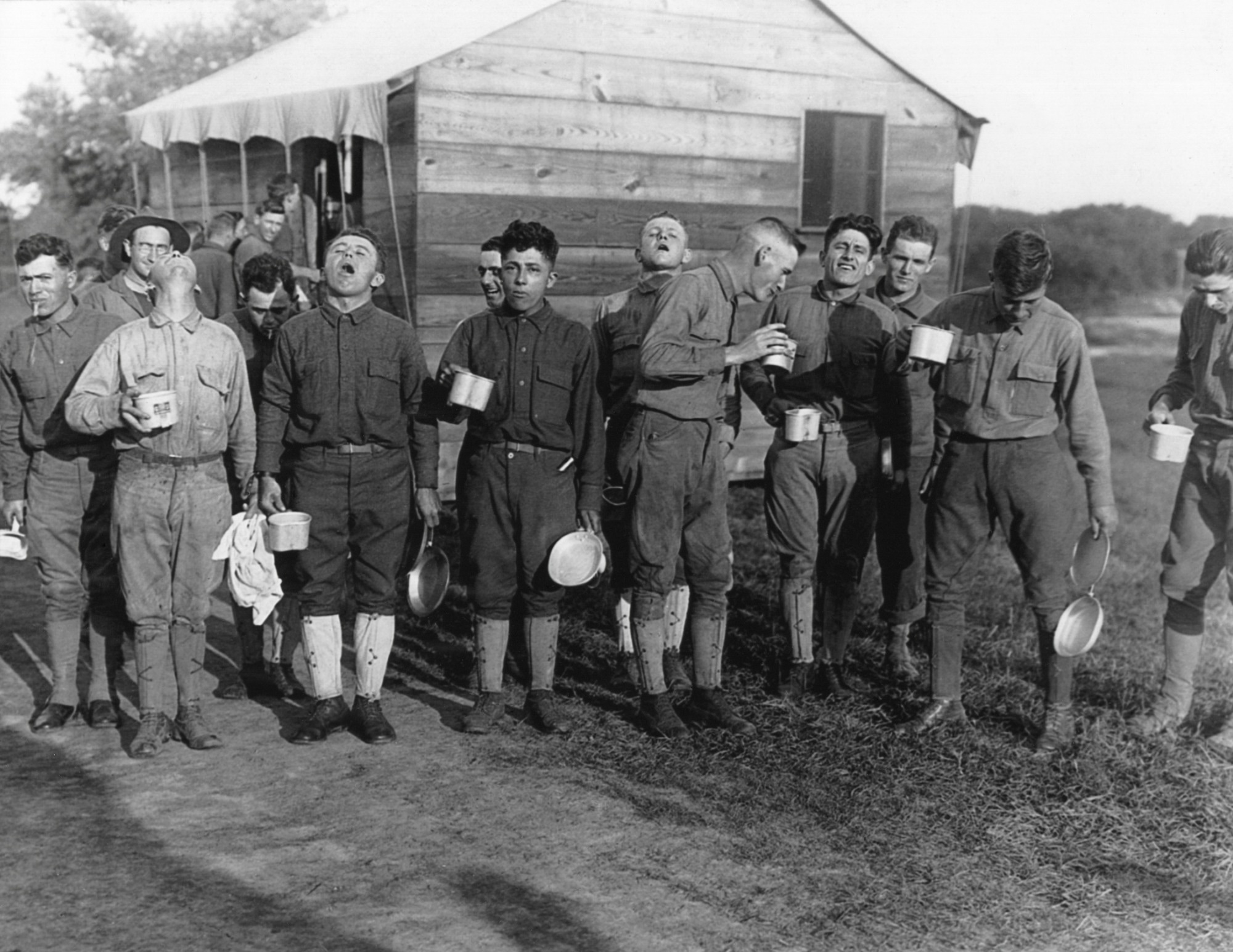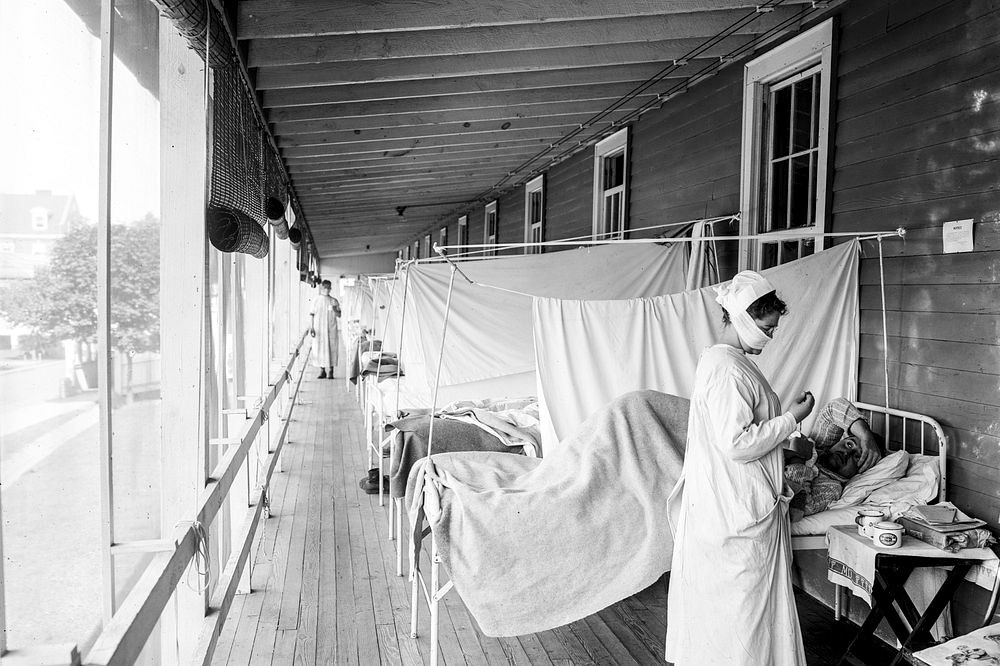A new analysis of the remains of victims of the 1918 influenza pandemic, which killed an estimated 50 million people worldwide, contradicts the widespread belief the flu disproportionately impacted healthy young adults.
Because so many people fell ill so quickly, physicians at the time believed the healthy were as likely to die from the flu as those who had already been sick or frail. Despite numerous historical accounts, though, it turns out there is no concrete scientific evidence to support that belief.
 Soldiers gargle with salt and water to prevent influenza. Sept. 24, 1918. Camp Dix, New Jersey, during the 1918-19 'Spanish' Influenza pandemic. Image Credit: Everett Collection / Shutterstock
Soldiers gargle with salt and water to prevent influenza. Sept. 24, 1918. Camp Dix, New Jersey, during the 1918-19 'Spanish' Influenza pandemic. Image Credit: Everett Collection / Shutterstock
Researchers at McMaster University and the University of Colorado Boulder, who analyzed victims' age of death and studied lesions on victims' bones, report that the most susceptible to dying of the flu had exhibited signs of previous environmental, social, and nutritional stress.
"Our circumstances – social, cultural and immunological – are all intertwined and have always shaped the life and death of people, even in the distant past," explains Amanda Wissler, an assistant professor in the Department of Anthropology at McMaster and lead author on the study, published today in the journal PNAS.
"We saw this during COVID-19, where our social backgrounds and our cultural backgrounds influenced who was more likely to die, and who was likely to survive," she says.
Much of the research on the 1918 pandemic relies on historical documentation such as vital statistics, census data, and life insurance records, none of which include information on pre-existing conditions or general environmental, dietary, or other chronic stressors that can impact one's overall health throughout a lifetime.
For the study, researchers examined the skeletal remains of 369 individuals from the Hamman-Todd Documented skeletal collection housed at the Cleveland Museum of Natural History. All had died between 1910 and 1938. The sample was divided into two groups: a control group who had died before the pandemic and those who died during the pandemic.
A living person's skeletal structure may undergo lasting changes due to poor health, resulting in diminished height, irregular growth, developmental tooth defects, and other indicators.

Image Credit: Library of Congress
The team searched for lesions, or indicators of stress, on the shinbones of the pandemic victims. For example, new bone formation occurs in response to inflammation caused by physical trauma or infection. Researchers can determine if a lesion had been active, in the midst of healing, or had completely healed, all of which provide evidence of underlying conditions.
"By comparing who had lesions, and whether these lesions were active or healing at the time of death, we get a picture of what we call frailty, or who is more likely to die. Our study shows that people with these active lesions are the most frail," says Sharon DeWitte, a biological anthropologist at the University of Colorado Boulder and co-author of the study.
Pre-existing medical conditions such as asthma or congestive heart failure are common risk factors that can contribute to poor outcomes from infectious diseases such as influenza.
Racism and institutional discrimination can amplify these effects, as evidenced in the COVID-19 pandemic, say researchers. During the Black Death in London, individuals who had previously suffered environmental, nutritional, and disease stressors were likelier to die from the plague than their healthier peers.
"The results of our work counter the narrative and the anecdotal accounts of the time," says Wissler. "This paints a very complicated picture of life and death during the 1918 pandemic."
The researchers plan to continue to explore the relationship between socioeconomic status and mortality in future work.
Spanish Flu: a warning from history
Spanish Flu: a warning from history
Source:
Journal reference: